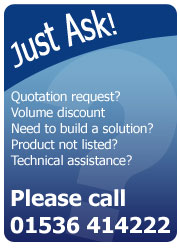Barcodes
What is the difference between 1D and 2D barcodes?
Barcodes come in two main types or symbologies
- One dimensional barcodes (1D or linear)
- Two dimensional barcodes (2D).
1D / Linear Barcodes
These barcodes consist of lines (commonly called bars) and spaces

Code 128

EAN 13
Code 128 and EAN 13 are two of the most common 1D barcodes. As can be seen from these examples, 1D barcodes typically contain a part number, product code or patient number etc. When a barcode is read and input into a computer, it is typically cross referenced to either a local or central database, where large amounts of information can be automatically retrieved for the item scanned. The database could contain information on pricing in a retail application, location and stock in manufacturing and location and keeper in an asset tracking application.
Code 128
A general purpose barcode, widely used across all industries including the public sector and government bodies and can contain letters and numbers.
EAN 13
Most widely recognised and is the type of barcode used to identify goods in shops and supermarkets by scanning it at the till or point of sale system or checkout. This barcode can only contain numbers. In order to use EAN 13 companies need to register with GS1 UK. This ensures that they are given a unique range of numbers to use on their barcodes, which will not clash with other manufacturers. This is important in avoiding confusion in pricing and stocking different products
2D Barcodes
2D barcodes will typically contain more detailed information about the item such as the full address of the recipient in the case of parcel delivery.

Datamatrix
Datamatrix is one of the most common 2D barcodes, and is typically used in parcel delivery and healthcare. Whereas the Code 128 and EAN 13 barcodes above contain 12 and 13 characters respectively, the Datamatrix barcode contains 108 characters.
Barcodes can either be printed directly onto the product, onto packaging or onto a label, ticket, tag, wristband or other material which can then be applied to an item or even a person.
There are two ways of printing your own barcodes, either using a conventional office printer and A4 laser or inkjet labels, or a dedicated (thermal) label printer. Using a dedicated thermal printer is easier and more efficient than using a conventional office printer, and has a number of benefits including:
- Much wider choice of label materials and adhesives so that a solution can be tailoredmade to suit your specific requirements.
- No more paper jams. The thermal printing process does not involve heating the labels as it does with laser printers. This heating process in laser printers can cause the adhesive to leak out causing paper jams.
- Labels are normally printed in a continuous form, either on rolls or fan folded, for ease of application.
- Thermal label printers can be fitted with automatic cutters so that labels or tags can be cut to the desired length.
- Greater range of shapes and sizes available off the shelf.
To find out more about different types of printer click here
For related products including barcode printers visit our online shop
What software can I use to create my barcodes?
There are a number of software olutions for designing and printing labels and documents with barcodes, including:
- Standard Windows programs such as Word or Excel using a barcode font.
- Dedicated label esign rograms such as Bartender.
- Most thermal printers have built-in barcode software in the form of arcode fonts. This allows barcodes to be printed with suitable software on your PC or other devices such as LCs (Programmable Logic Controllers). If you would like more information on this method of printing arcodes, lease call the AM Labels Technical Support Team for advice on 01536 414222)
AM Labels can provide solutions for all the above options. Most thermal label printers come with a free, basic label design program which will allow you to print 1D and 2D barcodes. More advanced versions will also allow you to connect to external databases.For more information on selecting a label printer, please see our thermal printer selection guide, or call our friendly and knowledgeable sales team on 01536 414222.
For related products, including barcode and label design software, visit our online shop.
